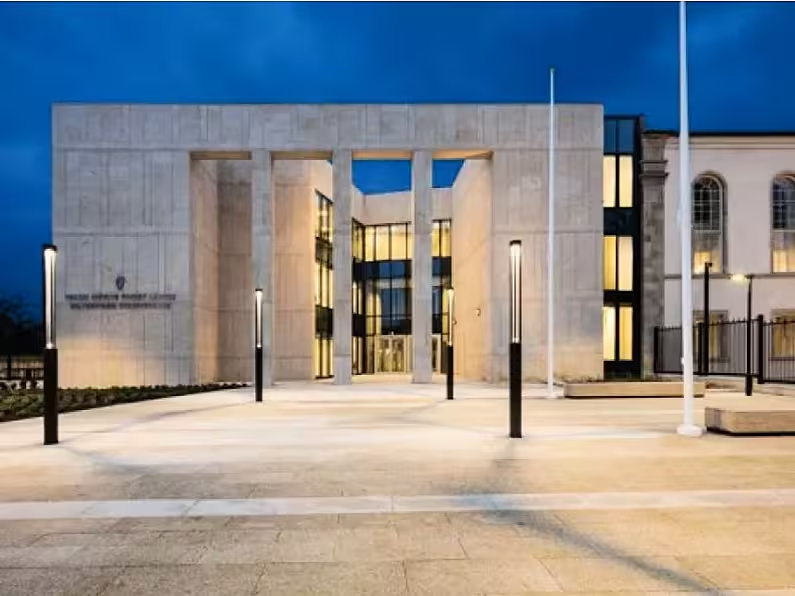Lawyers for a convicted murderer from Waterford have told the Court of Appeal that damaging Facebook messages sent from the accused's account were not sufficiently proven to have come from him.
23 year old William Moran of Connolly Place, Waterford City, had pleaded not guilty at the Central Criminal Court to murdering 22 year old Martin Brophy at the old Waterford Institute of Technology building between May 19 and May 21 2012.
He was unanimously found guilty by a jury and given the mandatory life sentence in March 2015.
The Irish Independent reports that opening an appeal against conviction, Moran's barrister, Colman Cody, said the evidence arising from the Facebook message was the most damaging piece of evidence in the case.
However, at issue was the means by which this evidence came into being, the provenance of it or “more importantly” the proof of it and it's admissibility.
He said the State knew they had to go to Facebook to get the material to prove it emanated from Moran - they couldn't rely on screenshots – and a request for Mutual Assistance was sought by the State before the case was first listed for trial in January 2014.
Mr Cody said it appeared that concerns were raised by a number of US internet service companies and they were not prepared to provide witnesses in respect of these matters.
He said that between January 2014 - when the case was first listed for trial - and January 2015, there was a process of negotiations or discussions between the office of the DPP and the Department of Justice. The net result of those discussions was that the material from Facebook “did not need proof”.
In the end, he said the Facebook message was described by the prosecution as “real evidence” - that it was evidence automatically generated without human input - and that any issues in relation to operation and function were dealt with by a certificate of authenticity.
However, he said it wasn't real evidence. He said Facebook evidence was not analogous to something like CCTV or a photograph where a person walks in front of a camera and is automatically captured. Facebook evidence required human input and, as such, required authoritative evidence to show the operation and function of the system.
He said there ought to have been witnesses from Facebook as was originally envisaged and requested by the DPP officer in January 2014 but “to this day” there had been no explanation as to why there was an impediment to that being done.
Mr Justice John Hedigan asked Mr Cody what the man on the street might say about compelling witnesses to come from across the Atlantic to give evidence about a system like Facebook.
In response, Mr Cody said there were legal principles, statutes and common law authorities in relation to evidence.
That went back to the original request by the DPP officer in January 2014, Mr Cody said, adding that they knew then that it wasn't real evidence.
The difficulty was that it wasn't shown how it related to the accused. It was still arguable whether the message was written by Moran or someone purporting to be Moran and it was necessary to go to Facebook to show the conversation emanated from him, counsel submitted.
Mr Cody said there was no evidence as to how “what was supposedly said on Facebook” was retrieved and prepared in the form it was presented. There should have been proof as to how the material got to where it was.
He said there was an impermissible involvement by the DPP in negotiations with the respective central authorities.
While the DPP may be in a position to be consulted on certain matters, that's a long way removed from “campaigning” in relation to the way and manner in which this particular piece of evidence could be proved.
He said he didn't know how many other cases have been affected.
Mr Cody submitted further grounds relating to mobile phone date evidence and evidence in relation to what was described as “sim-card swaps” used to undermine a claim by Moran that he had lost his phone on the night in question.
Counsel for the Director of Public Prosecutions, Michael Delaney SC, said the DPP's request in January 2014 was for a witness to prove the admissibility of the Facebook message. What came back was a certificate of authenticity.
Mr Delaney said the US Department of Justice was experiencing “difficulties” in relation to obtaining evidence from a number of internet service providers for transmission to a number of common law jurisdictions including Ireland (as well as the UK, Australia and Canada).
Ultimately, he said the central authorities of Ireland and the United States indicated that they were prepared to agree to a formula of words going forward.
It was “absolutely understandable” that an agreement should be reached in relation to this process Mr Delaney said. If Facebook were required to provide an employee for every case all over the world they would “never have an employee on the ground in California” and that was the context in which the certificate was formed and adopted.
Mr Delaney said there was evidence to suggest the author of the message was Moran.
He said gardaí had accessed the Facebook account of the person to whom the message from Moran's Facebook account was sent and photographs or screenshots were taken of the exchange.
He said Mr Cody's submission referred to the digital records and not the screen shots. The screen shots were identical and there was nothing to suggest the records obtained from Facebook were not reliable.
He said the content of the message, sent 24 hours before the body was found, limited the possible author to the two people who were at the scene.
Mr Justice George Birmingham, who sat with Mr Justice Alan Mahon and Mr Justice John Hedigan, said the court would reserve its judgment.
Ruaidhrí Giblin - Irish Independent














